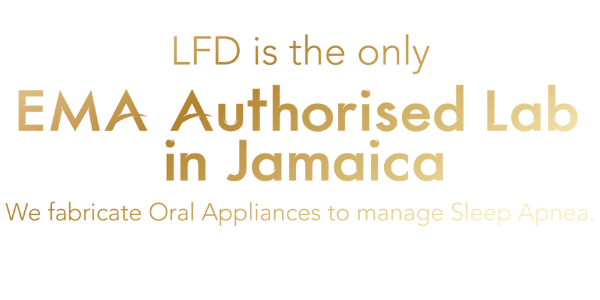


Payment for dental care is expected at the time of visit. Our Business Manager stands ready to assist you with your payment options prior to your treatment.
Payment Responsibility – patients should know that we cannot guarantee the amount of their insurance company’s coverage. All insurance claims are submitted promptly after the patient receives treatment; and, if the patient’s insurance company has not paid by the 91st day following treatment, the amount due will be billed to the patient in full.
Our administrative staff prides itself on helping our patients maximize their benefits, and we are always available to answer your questions. We accept the following forms of payment for dental services:
If you are having a major dental treatment, we will be happy to discuss other payment options with you.
Inflamed tissue bleeds easily, so if your gums are not healthy, they will bleed. The primary cause of the inflammation is the retention of plaque (bacteria). Bleeding gums are one of the first signs of Periodontal (Gum) Disease. Learn more about Periodontal Disease by clicking here.
A sealant is a plastic material that is usually applied to the chewing surfaces of the back teeth — premolars and molars. This plastic resin bonds into the depressions and grooves (pits and fissures) of the chewing surfaces of these teeth. The sealant acts as a barrier, protecting enamel from plaque and acids. Toothbrush bristles cannot reach all the way into the depressions and grooves to extract food and plaque. Sealants protect these vulnerable areas by “sealing out” food and plaque.
Dental X-rays can reveal cavities (tooth decay) before they are even visible to the dentist. Many dentists will take yearly bite-wing X-rays to catch the early development of cavities. Dental X-rays are used to identify the following:
The number, size, and position of teeth.
There is very low radiation exposure; however, no one should ever receive more radiation than necessary. A lead apron can be used to cover the body, thus reducing radiation exposure. Pregnant women should not have X-rays taken unless absolutely necessary.
The evidence on safety published to date tends to suggest that bleaching is a relatively safe procedure. Hydrogen peroxide breaks down into water and oxygen. Urea breaks down into carbon dioxide and ammonia. Normal body processes easily handle all four products.
It has been suggested that peroxides are mutagenic and can boost the effects of known carcinogens. The American Dental Association (ADA), however, has found no evidence that, when used as directed, tooth whiteners increase cancer risk or cause other problems. The ADA has also acknowledged that some members of the public abuse bleaching products.
A dental implant by itself is not a tooth! A dental implant is a prosthesis. Essentially, it is a small titanium post/fixture that is inserted into the jawbone, on top of which, a single crown (cap), a fixed bridge, a partial denture, or full denture can be attached. Once the implant integrates to your bone, a structure called an abutment is connected to the implant and then the artificial tooth/teeth are attached. An oral surgeon places implants and Dr Lawson-Myers restores them with crowns, bridges or partial/complete dentures.
Odor-producing bacteria that grow in the mouth cause bad breath. When you don’t brush and floss regularly, bacteria accumulate on the bits of food left in your mouth and between your teeth. The sulfur compounds released by these bacteria make your breath smell bad. If you brush and floss properly, but your bad breath persists, you may have a medical problem like Sinusitis or Periodontal (Gum) Disease. Call your physician or dentist if you suspect such a problem. Learn more about Periodontal Disease by clicking here.
NO! Plaque must be mechanically removed with a soft toothbrush and floss. Mouthwashes and rinses can actually cover up smells that might indicate dental problems that need to be addressed. For this reason, we stress that regular dental care, including checkups, are very important.
You should floss your teeth at least once a day. Flossing in between your teeth removes food remains and bacteria (plaque) that is sandwiched between the teeth in areas that a toothbrush cannot reach. Plaque causes cavities and can lead to gum disease and bad breath. Additionally, recent studies have shown that flossing helps prevent heart attacks, strokes, and premature (low birth weight) babies – all invaluable reasons to floss at least once a day!
After a root canal treatment, teeth are in a weakened state and need further reinforcement. A crown covers the tooth, often enhancing the appearance and adds support to the tooth.
Ideally, baby teeth should be “pushed out” by permanent teeth pushing up directly under them. Occasionally, the permanent teeth are misdirected and enter the mouth in front of or behind the baby teeth. When this happens, baby teeth often remain in the mouth longer than they should. The alignment of permanent teeth is more likely to need correction with braces when they do not enter the mouth in the correct position.
Regular clinical examinations allow for early detection and treatment of dental cavities. Tooth decay and gum disease are not initially painful; therefore, they may go undetected for years. Some of the other possible diagnoses are: trigeminal neuralgia, sinusitis, TMD pain, and sialoliths. Ear Infection, oral cancer, and oral herpes are just some of the many other conditions that patients may have when they come to the dentist and are in pain. If you are experiencing pain in and around your mouth, a visit to the dentist is in order.
Some people are born with teeth that are more yellow than others. Others have teeth that yellow with age. Your natural tooth color can also be affected by many factors. Surface stains (called extrinsic stains by dentists) and discoloration can be caused by:
Internal stains (called intrinsic stains by dentists) can be caused by:
The dentist is a key member of your personal medical team. Patients should be open with their dentists about all of their health conditions because some may require special medication or treatment. For example, patients with certain heart conditions may require antibiotics before dental treatment. Also, they may require tailored treatment to prevent excessive bleeding if they are taking a blood thinner.
Dentists can also monitor the affects oral disease can have on a health condition. For instance, dentists are on the lookout for the development of gum disease in pregnant women (Periodontal disease can result in premature, low birth weight babies).
Sharing health conditions also helps prepare the dentist in case of an emergency (eg epilepsy).
Be sure to reveal any changes in your health history at every dental visit to ensure optimum, uncomplicated care.
Make sure you tell the dentist if you have any of the following conditions: